 |
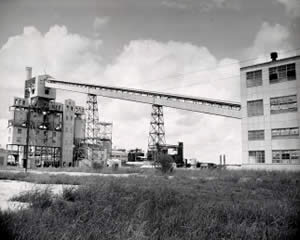 |
 |
During the summer of 1941, the Austin Chamber of Commerce and the Lower Colorado River Authority joined forces to acquire a wartime industry for the Austin area. Located north of the city, their industry--a magnesium plant--employed 600 to 700 people during its peak, but was officially closed in October of 1944. In placing the government-owned plant on a list of surplus war industries, the Reconstruction Finance Corporation noted that it was third lowest in production costs, but "badly located, both with respect to its source of raw materials and its consuming market." The facility found new life, however, as the Balcones Research Center of the University of Texas. |
 |
| [C 06010] enlarge
image |
|
|
| |
|
 |
"Austin's huge magnesium plant that is taking form north of town is not a fly-by-night proposition that will fold up after the war is over, high officials of the company assured Saturday.
Louis Ware, president of the International Minerals and Chemical company that will operate the plant, and several members of the company staff were there to inspect the work already started.
'Magnesium is a young metal,' he said, 'one that has its future tied up with the newest things in the world
today--air traffic. As a metal, it is one-third lighter than aluminum and 16 times as strong as steel per pound of weight. It is definitely going places.'"
|
| Austin American-Statesman,
March 1, 1942 |
| |
|
|
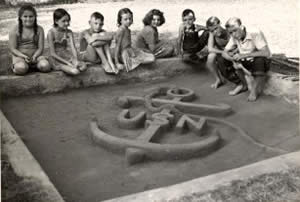 |
|
This U.S. Navy insignia created by West Austin Playground children won first place in the 1943 sandcraft exhibit sponsored by the City of Austin Recreation Department. The Department's annual report for that year noted that "intensive instruction was given to any interested boy or girl during the month of June" in preparation for the annual event, and that the "themes were largely patriotic." |
| [PICA 24287] enlarge
image |
|
|
| |
|
|
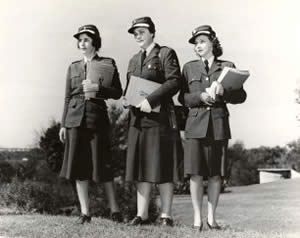 |
|
Mrs. L. B. Griffith, Miss Dolly Maude Harris, and Mrs. Betty Anne Coffman were among the Austin Women Volunteer Services' (AWVS) members who helped deliver the 1942 Austin telephone directory. As more and more able-bodied men were drafted into military services, women and minorities were called upon to fill shortages the war created. |
| [PICA 27170] enlarge
image |
|
|
| |
|
|
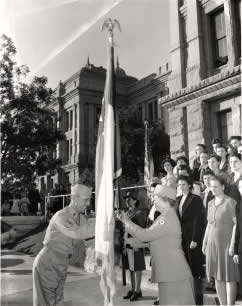 |
|
A group of seventy-six WAC recruits were sworn in by Colonel O.P. Houston in this ceremony on the south steps of the Capitol. Originally known as the Women's Army Auxiliary Corps (WAAC), the group's name was changed to the Women's Army Corps by Congressional action in 1943. Texan Oveta Culp Hobby served as the national director. |
| [PICA 27459] enlarge
image |
|
|
| |
|
|
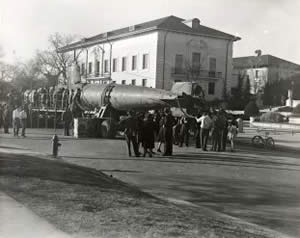 |
|
"Banner bond selling marked the weekend for Austin.
The visit of the two-man Japanese submarine Saturday and Sunday resulted in sales which were expected to total $225,000 when stamp sales were totaled.
And that wasn't all. A Negro bond rally held Sunday with [Doris] Dorie Miller, Negro hero of Pearl Harbor as the honored guest, was expected to total a bond sale of from four to five thousand dollars
."
The Austin Statesman, January 25, 1943 |
| [PICA 07209] enlarge
image |
|
|
| |
|
|
 |
|
 |

